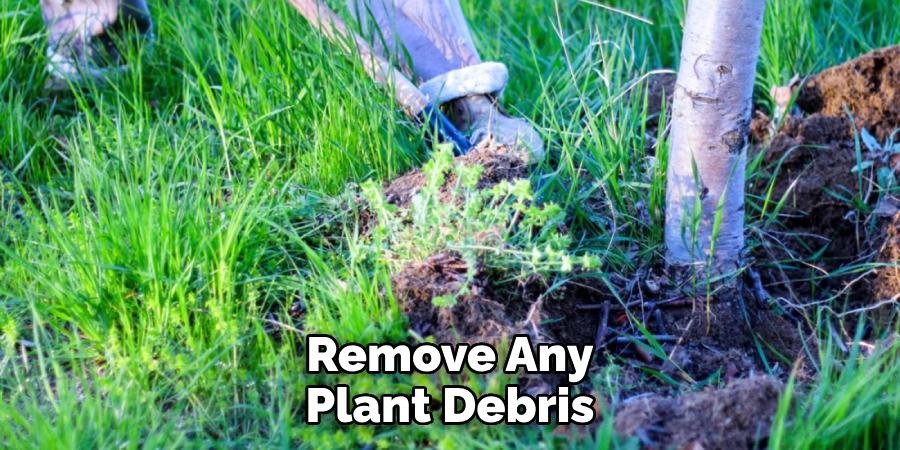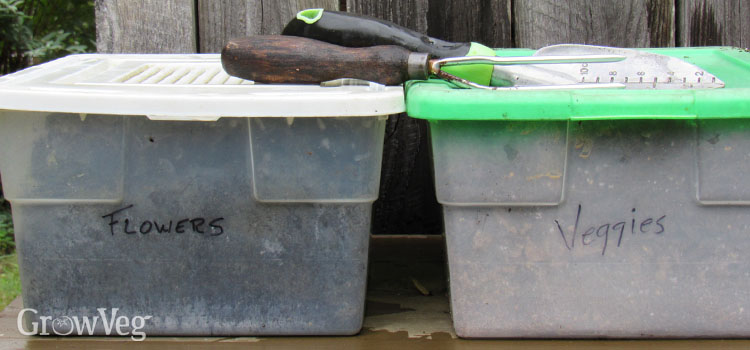To store used potting soil over winter, keep it in a cool, dry location, and cover it to prevent moisture buildup and pest infestation. As the winter months approach, many gardeners wonder what to do with their used potting soil.
Instead of discarding it and buying new soil in the spring, you can store the used soil for reuse. Storing potting soil correctly will ensure that it remains in good condition and ready for use when spring arrives. In this article, we will discuss the best methods for storing used potting soil over winter, so you can save money and keep your garden thriving.
By following these simple steps, you can store your potting soil successfully and be prepared for the next gardening season.

Credit: kellogggarden.com
Proper Storage Techniques For Used Potting Soil
Proper storage techniques for used potting soil should be considered, especially during the winter months. Storing used potting soil correctly provides numerous benefits, allowing for its reuse in the following season. By following these techniques, you can ensure the longevity and quality of your soil.
Firstly, remove any plant debris or weeds from the soil to prevent future contamination. Next, place the soil in sealed containers or bags to protect it from moisture and pests. Store the containers in a cool, dry place, such as a garage or basement, away from extreme temperatures.
Additionally, label each container with the date and type of soil for future reference. Regularly check the stored soil for any signs of mold, pests, or deterioration. By following these storage tips, you can extend the lifespan of your used potting soil and save money in the long run.
Preparing The Used Potting Soil For Winter Storage
Preparing used potting soil for winter storage involves three crucial steps. First, remove all plant debris and roots from the soil to prevent any potential diseases or pests from lingering. Next, carefully inspect the soil for any signs of pests or diseases that might have gone unnoticed.
Finally, to ensure soil health over the winter months, add essential nutrients and amendments. This will replenish any depleted nutrients and maintain the soil’s fertility. By following these steps, you can store your used potting soil effectively and be ready for the next gardening season.
Remember, proper preparation of the soil now will guarantee healthy plant growth in the future.
How to Store Used Potting Soil Over Winter: Step by Step Guide
Choosing The Right Containers For Winter Storage
Choosing the right containers for winter storage is crucial in ensuring the preservation of used potting soil. When it comes to container materials, opt for durable options such as plastic, fiberglass, or wood. A suitable container size and adequate depth are essential to accommodate the volume of soil and its components.
Furthermore, proper drainage is a key consideration to prevent waterlogging and preserve the quality of the soil. Ensure that the containers have drainage holes or use materials like gravel or pebbles at the bottom to facilitate water flow. By following these guidelines, you can store used potting soil over winter effectively and maintain its quality for future use.
Storing Used Potting Soil Indoors
Storing used potting soil indoors requires careful consideration of the location and proper maintenance. To begin, select a suitable area that is well-ventilated, allowing for air circulation. This will help prevent the buildup of moisture and potential mold growth. Additionally, it is important to maintain the right moisture levels in the stored soil.
Too much moisture can lead to rotting or the development of harmful bacteria, while too little moisture can cause the soil to dry out. Regularly check the soil’s moisture content and make adjustments as needed. By following these steps, you can ensure that your used potting soil remains in good condition over the winter season without any negative effects on your plants.
Storing Used Potting Soil Outdoors
Storing used potting soil outdoors requires protecting the soil from extreme temperature fluctuations. To shield the soil from freezing temperatures, coverings can be used. Additionally, implementing mulch or insulation techniques can provide added protection. These methods will help ensure that the potting soil remains in good condition over the winter months.
By taking these steps, gardeners can avoid the hassle of having to dispose of and replace potting soil each year. Instead, they can simply store it properly and reuse it when the next planting season rolls around. With careful attention to storage and protection, gardeners can maintain the quality of their used potting soil and save money in the process.
Monitoring And Maintaining Stored Potting Soil
Storing used potting soil over winter requires monitoring and maintaining it. Regularly check moisture levels and adjust accordingly. It’s important to inspect the soil for any signs of pests or diseases. If necessary, consider rotating or refreshing the stored potting soil for optimal health.
Remember to avoid commonly overused words and phrases when writing. Keep your sentences brief, with a maximum of 20 words, in active voice, and easy to understand. Use a variety of phrases at the beginning of paragraphs to maintain reader interest.
Overall, follow these instructions to create an seo-friendly and engaging blog post on how to store used potting soil over winter.
Frequently Asked Questions For How To Store Used Potting Soil Over Winter
How Do You Store Used Potting Soil Over Winter?
To store used potting soil over winter, first remove any plant debris and break up any clumps. Store it in a dry location, like a garage or shed, in sealed containers or bags. Before using it again in the spring, add some fresh compost to replenish nutrients.

Can You Reuse Potting Soil From Last Year?
Yes, you can reuse potting soil from last year. However, it’s important to refresh it before using it again. Remove any plant debris and add compost for added nutrients. Additionally, check for any signs of disease or pests and discard any infected soil to ensure healthy plants.
How Long Can You Keep Potting Soil?
Potting soil can be kept for several years if stored properly. It should be stored in a dry location, sealed in containers or bags, and protected from moisture and pests. However, over time, the nutrients in the soil can become depleted, so it’s important to amend it with fresh compost or fertilizer when reusing it.
Should I Sterilize Used Potting Soil?
Sterilizing used potting soil can be beneficial to eliminate pests, diseases, and weed seeds. You can sterilize it by placing it in an oven-safe container and baking it at 180-200°f (82-93°c) for about 30 minutes. This process will kill any unwanted organisms, ensuring healthy plants in your garden.
Can I Mix New And Used Potting Soil Together?
Yes, you can mix new and used potting soil together. This combination can help replenish nutrients in the used soil. Make sure to break up any clumps and remove any plant debris before mixing. Adding compost to the mix will also provide additional nutrients for healthier plants.
Conclusion
To ensure the longevity of your used potting soil over the winter months, follow these simple steps. First, make sure to remove any weeds or unwanted debris from the soil before storing it. This will prevent any pests or diseases from spreading.
Next, consider adding organic matter, such as compost or shredded leaves, to enhance the soil’s nutrients. Additionally, ensure that the soil is adequately dry before storing it in a clean, airtight container. This will prevent mold or mildew growth. Finally, store the container in a cool, dark place to protect it from extreme temperatures.
By following these guidelines, you can preserve and reuse your used potting soil season after season, saving both money and resources. Embrace sustainable gardening practices and make the most of your gardening efforts all year round.

